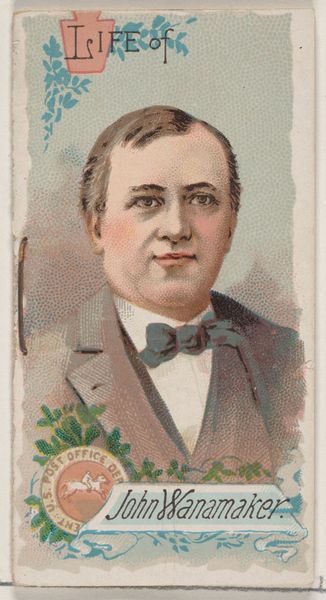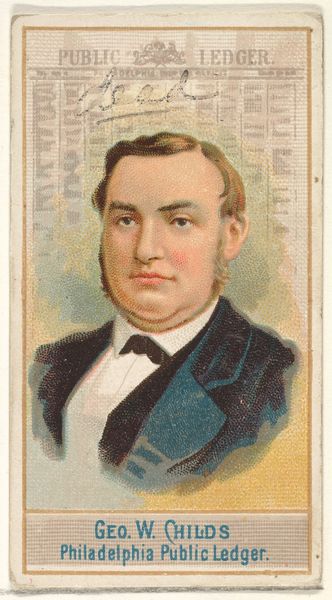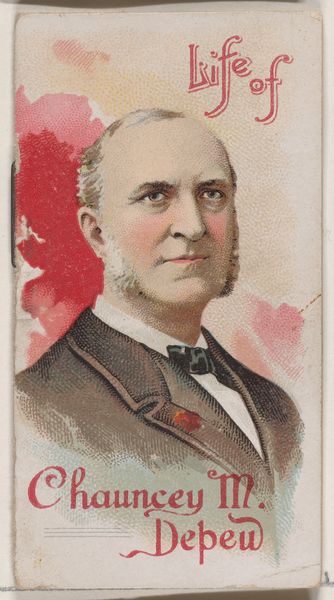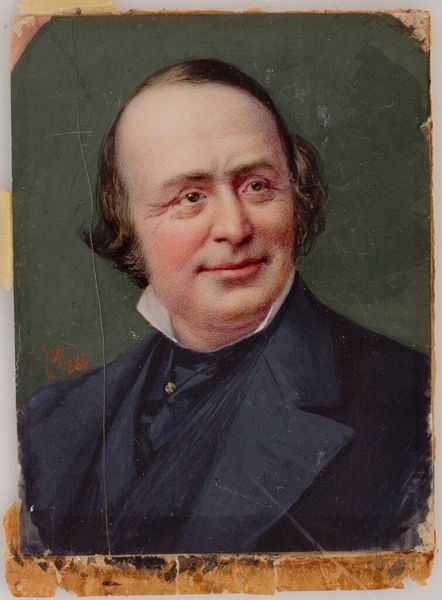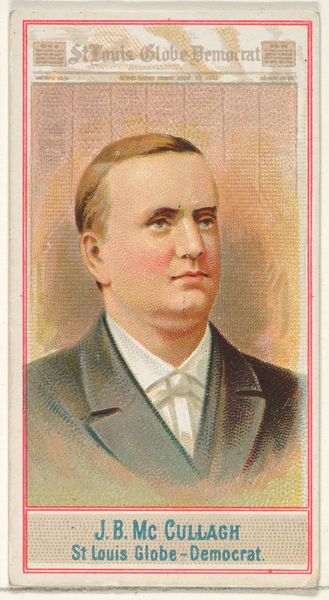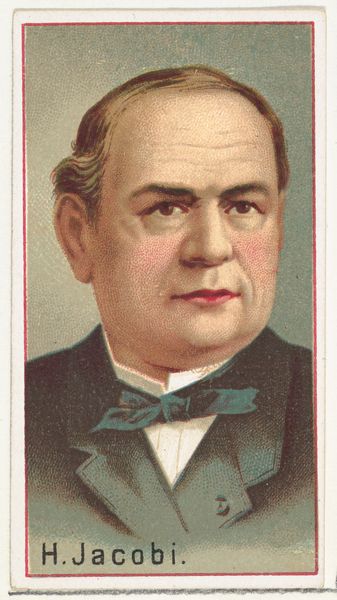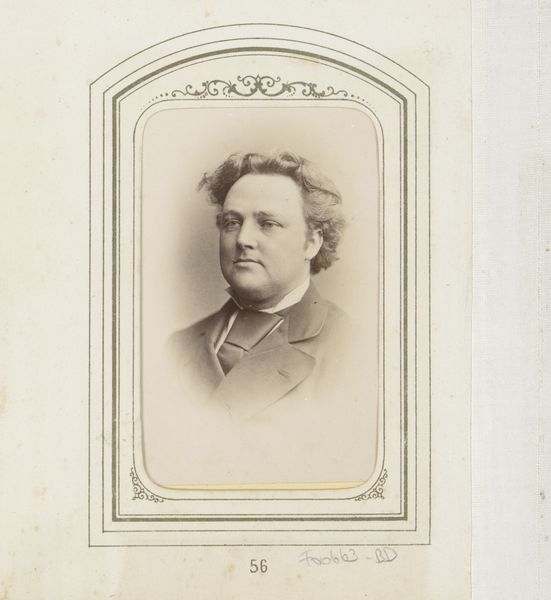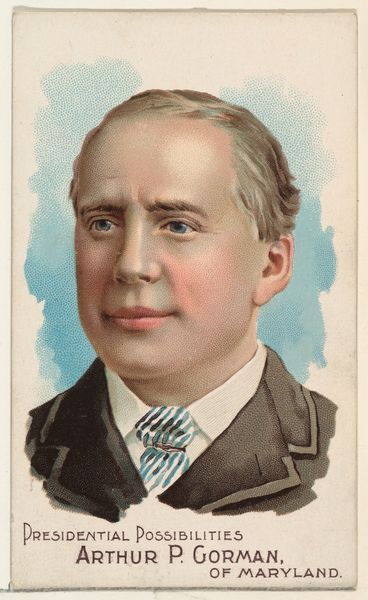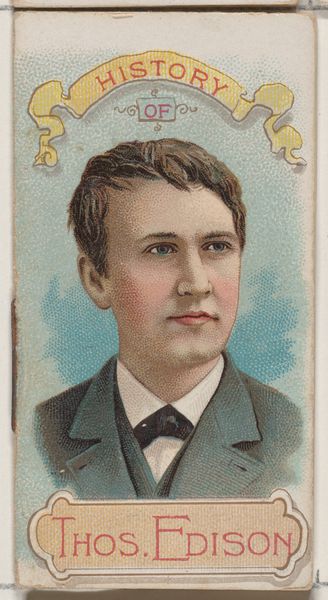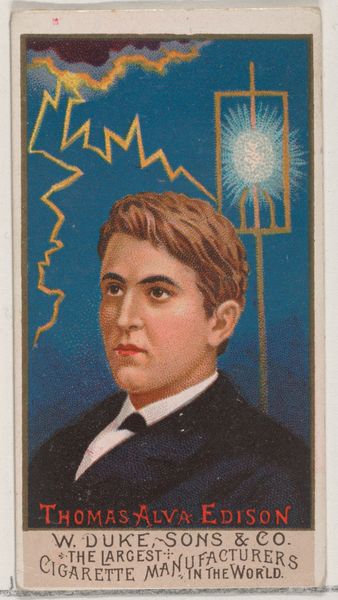
Life of George W. Childs, from the Histories of Poor Boys and Famous People series of booklets (N79) for Duke brand cigarettes 1888
0:00
0:00
drawing, coloured-pencil, print
#
portrait
#
drawing
#
coloured-pencil
#
16_19th-century
# print
#
coloured pencil
#
men
Dimensions: Overall (Booklet closed): 2 3/4 × 1 1/2 in. (7 × 3.8 cm) Overall (Booklet open): 2 3/4 × 2 7/8 in. (7 × 7.3 cm)
Copyright: Public Domain
Curator: Looking at this portrait, "Life of George W. Childs," a print from 1888 created by W. Duke, Sons & Co. as part of a series for Duke brand cigarettes, I’m struck by its rather ornate bordering and its focus on a specific narrative. It’s like a tiny window into the culture of aspiration and self-help prevalent at the time. What are your initial impressions? Editor: The symmetrical balance immediately strikes me. The framing devices above and below the central portrait speak of order, decorum, and perhaps an aspiration toward immortality of sorts—rendered, curiously, in the ephemerality of cigarette packaging. The somewhat rosy rendering lends an almost dreamlike or saintly glow. Curator: I think that dreamlike quality stems from how it blends the personal and the public. We’re presented with George W. Childs, not just as an individual, but as an emblem of success through hard work – "Histories of Poor Boys and Famous People," it shouts a narrative of possibility, doesn’t it? These narratives upheld prevailing structures while superficially inspiring those left out. Editor: Absolutely. And the chosen visual emblems are fascinating. The symmetrical curls and flourishes create a visual language of achievement but, crucially, also link back to heraldry. These commercial images adopted visual motifs normally associated with aristocracy, cleverly democratizing them for the masses. What could these small, consumable prints mean to their original audience? Curator: To me, they represented a type of symbolic capital. These weren’t merely collectible items, but access points into conversations about social mobility, fame, and identity. The figure is presented as an upstanding, respectable, "achievable" aspiration; such representation can obscure the broader, systemic issues hindering many, of course. But consider that, despite such limitations, a work like this has survived to enter The Met. Editor: Indeed! The visual language persists. What we find fascinating now are those same symbols functioning over time: power, potential, memory, worth. They continue to function as a symbolic charge in our own collective understanding of the late 19th century. Curator: Seeing how those charges play out in our contemporary social discourse, noting who and how it either reinforces or upends pre-existing assumptions…it's incredibly useful work. Thank you. Editor: The pleasure was mine. Examining the persistence of these visual metaphors helps connect our present understanding with layers of accumulated meanings from the past.
Comments
No comments
Be the first to comment and join the conversation on the ultimate creative platform.
